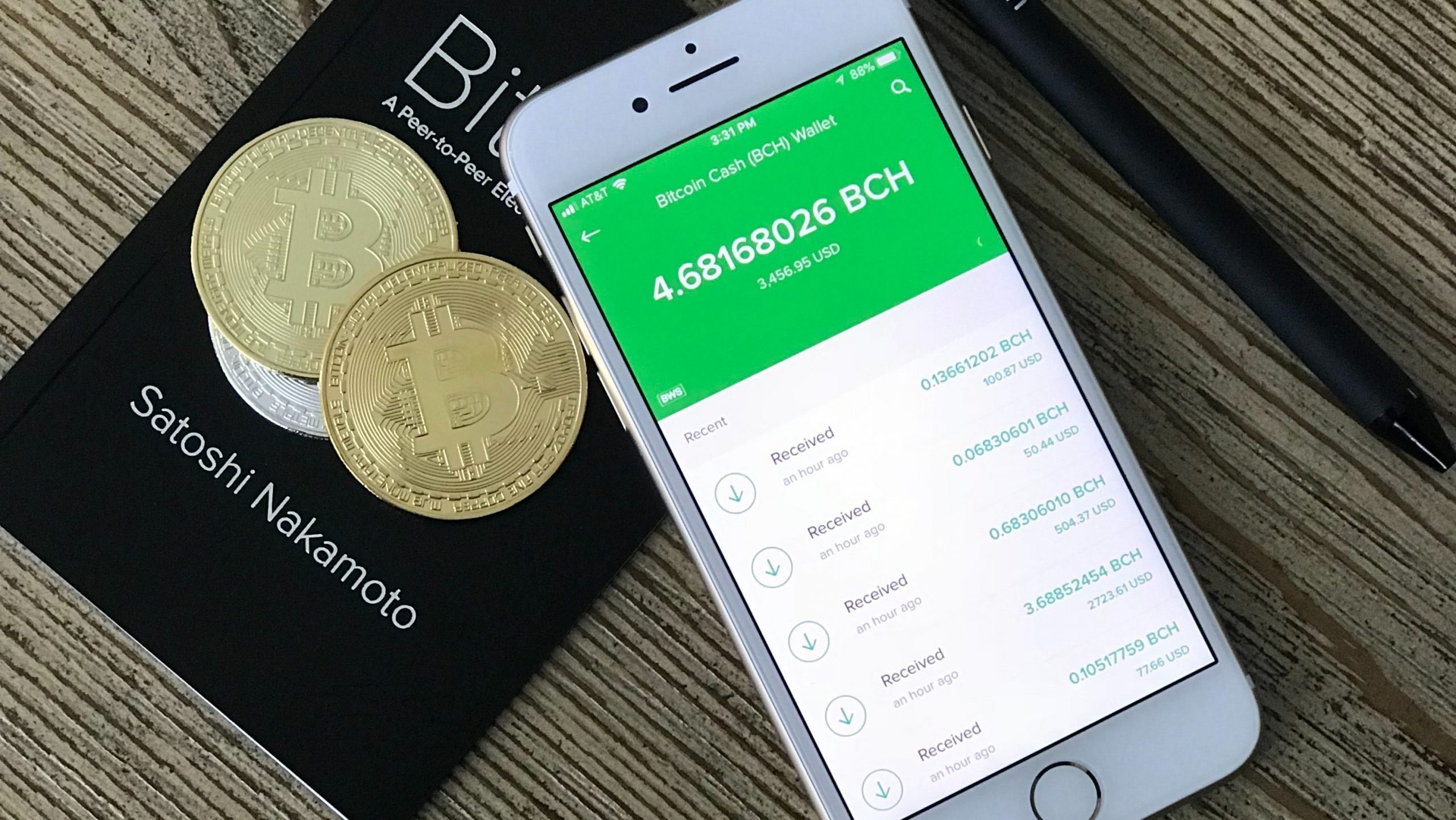When we think of Bitcoin, we primarily think of its place within the cryptocurrency market and how much it costs. Because people are primarily interested in buying Bitcoin, they often forget the technology powering it and, most importantly, the person who made it all possible: Satoshi Nakamoto, the inventor of Bitcoin. Without Nakamoto, we could very well be living in a world without cryptocurrency. Despite his monumental contribution to the industry, no one has seen his face or heard his voice.
This begs the question:
Who is Satoshi Nakamoto?
The short answer? No one really knows. Satoshi Nakamoto is a pseudonym; it could be one single person or entity, or maybe even a group of people. What we do know is that Nakamoto developed Bitcoin and authored the original Bitcoin whitepaper (Bitcoin: A Peer-to-Peer Electronic Cash System); they began writing the code for the cryptocurrency in 2007 and eventually registered the bitcoin.org domain in 2008. As such, Nakamoto’s name was permanently linked to Bitcoin and cryptocurrency since the start. Despite being Bitcoin’s creator, Nakamoto was only heavily involved in the modification of the code until about 2010, when he passed over the coding repository to Gavin Anderson and other major domains to various members of the cryptocurrency community, moving away from the project completely by the end of the year.
Hal Finney (1956 – 2014), a computer scientist and one of Bitcoin’s earliest supporters, created one of the first reusable proof-of-work systems back in 2004. His scope of work led him to Bitcoin’s original whitepaper through a cryptocurrency mailing list, eventually allowing him to become Bitcoin’s first recipient; Finney mined the first-ever public Bitcoins, sent over by Nakamoto himself. Because his work involved cryptography and some of the cryptocurrency’s base concepts, he was one of the first people thought to be behind Nakamoto’s identity, although Finney himself disproved those claims.
Of his conversations with Nakamoto, Finney mentioned that he thought he was working with a young man of “Japanese ancestry,” although it has been speculated that, due to Nakamoto’s exceptional English, he was unlikely to be Japanese. Furthermore, a Swiss coder by the name of Stefan Thomas graphed Satoshi Nakamoto’s Bitcoin forum posts and revealed that there was little to no activity between 5 am and 11 am GMT, equivalent to midnight and 6 am EST; this suggested that the poster was asleep during this timeframe, which meant that it was likely that the poster lived in North America and not Japan.
Why the anonymity?
Satoshi Nakamoto has gone through great lengths to ensure that his, her, or their identities remain hidden.

When it comes down to it, Bitcoin’s express purpose was to create a decentralized currency, free from the hands of a government, bank, or any type of third party. To make Bitcoin truly decentralized, perhaps it was a necessity for its creator to remain completely anonymous. Vitalik Buterin, the creator of Ethereum, for example, has maintained that the cryptocurrency community places too much importance in him. Being the inventor of such a valuable asset surely means that you have a lot of influence over said asset, which could potentially stray away from it being completely free of tampering.
Another idea might be to hide Satoshi Nakamoto from any potential enemies that could arise from being the creator of a government-free digital currency. Perhaps Nakamoto wanted to stay anonymous so that he could avoid being harassed by government agencies who would oppose a decentralized digital currency threatening their monetary policy; certainly he knew that if his identity was public, it would make him an easy target.

One intriguing theory originates from the CIA Project; Satoshi Nakamoto could roughly translate to Central Intelligence in Japanese, where 聡 (Satoshi) could be read as “intelligent” and 中本 (Nakamoto), although a fairly common Japanese surname, could be read as “center” and “root,” respectively. Because of this, they have theorized that Bitcoin could possibly have been created as a CIA or NSA initiative to test the waters for the government’s own decentralized currency.
Of course, since nobody has ever seen Satoshi Nakamoto, it is hard to say for sure why he has remained anonymous.
Who could Satoshi Nakamoto be?
Regardless, everybody loves a good mystery, so the world has taken to a few candidates who could actually be Satoshi Nakamoto’s real identity:
Dorian Nakamoto
In an article from Newsweek in 2014, Leah Goodman had resolutely claimed that Dorian Nakamoto, a Japanese American with the birth name Satoshi Nakamoto, was actually Bitcoin’s inventor. Dorian was a physicist at Cal Poly University and worked on a number of classified defense projects as a systems engineer. He also had a breadth of experience in computer engineering and financial information services. Adding further fuel to the flame, he had misinterpreted one of Goodman’s questions during an interview, thinking it was formerly for his contractual work with Citibank, stating, “I am no longer involved in that and I cannot discuss it. It’s been turned over to other people. They are in charge of it now. I no longer have any connection.”
People immediately thought he was talking about Bitcoin, but he would later renounce his comments and denied any association, saying that he had “no idea” of what Bitcoin even was.

Nick Szabo
An American with a Hungarian background, Nick Szabo was one of the earliest proponents of decentralized currencies, publishing a paper on “Bit Gold” in 1998, a precursor to Bitcoin. Along with a penchant for using pseudonyms during the 90s, he also had connections to Hal Finney and Wei Dai, other early cryptocurrency enthusiasts who were around before Satoshi Nakamoto had taken the world by storm.
According to Dominic Frisby in his book Bitcoin: The Future of Money (2014), he had consulted with a stylometrics expert who saw similarities in Szabo’s and Nakamoto’s writing. He also states that both Szabo and Nakamoto reference economist Carl Menger in their papers, providing some strong evidence for our mystery man.
Craig Wright
In 2015, Wired published an article stating they had discovered “the strongest evidence” that could possibly point Bitcoin’s creator: an Australian genius by the name of Craig Wright. The main sources of evidence were posts made on Wright’s blog about Bitcoin and its launch that coincided with posts made by Nakamoto himself. Wired sent an encrypted email in order to contact Wright who, in turn, returned the email by equally cryptic means.
During an interview, Wright claimed he was a bit of everything, “[I have] a master’s in statistics and two doctorates.” He would add, “I’ve been involved with all of this for a long time… I try and keep my head down.” It would seem that, academically at least, he was more than qualified to be Satoshi Nakamoto.
It would later be revealed that the posts that linked Wright to Nakamoto were actually backdated, mostly likely even fabricated. Vitalik Buterin, normally quiet about any type of gossip surrounding the cryptocurrency community, publicly called Wright fraudulent. Regardless of the criticism, Wright was unfazed and even went to lead the fork of Bitcoin Cash to Bitcoin SV.
Why did Satoshi Nakamoto create Bitcoin?
Nakamoto has explicitly stated that he wanted to create a “trustless” cash system that removed third party intermediaries that were normally required to conduct digital money transfers. The problem with third parties is they often garner hefty fees, being passed over to end users and possibly restricting transactions below a certain amount. In a February 2009 post, Nakamoto mentioned that the major flaw with conventional currency is that the central bank handling fiat must be trusted not to “debase” the currency, but it has been shown that banks often lend money out in credit bubbles with very little in reserve. He believed that Bitcoin could be the trustless cash system that would eliminate the need for a third party, a central bank, and potentially remove any tampering from said third parties.
The major issue with creating a digital currency was that they could be duplicated or reused after a transaction had occurred. Satoshi Nakamoto was the first to solve this problem, known as the double-spending problem, by embedding the solution directly into Bitcoin’s code – using the blockchain. This meant that Bitcoin was the first viable digital currency, making Nakamoto the father of the cryptocurrency industry.
Is Satoshi Nakamoto rich?
In a way, he is. When Nakamoto created Bitcoin, he mined around one million Bitcoin, presumably for testing but perhaps also for himself. At the time, the mining reward for each block was 50 BTC. While it could be argued that he is probably the most prolific miner in Bitcoin history, he had actually held back on mining even more Bitcoin in order to give other miners a chance to mine their own blocks.
Interestingly, the massive fortune of Bitcoins that Nakamoto had mined in Bitcoin’s beginning has never moved. Although it was recently reported that 50 BTC worth of Satoshi-era Bitcoins had been transferred, that theory was debunked when it was shown that they belonged to another early adopter of Bitcoin.
Satoshi Nakamoto is currently (As of May 28, 2021) sitting on over $36 billion worth of Bitcoin, completely untouched, suggesting that (if he still has the private keys, of course) he has truly acted as the creator of the decentralized currency that he had envisioned. It should be noted that even the slightest movement of his Bitcoin would undoubtedly be high-profile and could potentially trace back to his true identity.
What about Satoshi in Bitcoin?
In case you didn’t know, a satoshi, named after the man himself, is the smallest unit of Bitcoin, equivalent to one millionth of a Bitcoin, or 0.00000001 BTC. This is why people are able to purchase any amount of Bitcoin they care to afford, because they can purchase them in satoshi-sized increments.
Conclusion
Even now, nobody really knows who (or what) Satoshi Nakamoto is. If we think about the circumstances by which Nakamoto created Bitcoin, then perhaps his anonymity really is for the best. After all, Bitcoin was created to be completely decentralized – a payment system for the people – so what better way than to leave its fate up to its users?

About Author: Jade Barcelon is a writer from Capilano University’s School of Communication. In his spare time, he enjoys playing music, gaming, and staring at candlestick graphs.
Disclaimer: No Investment Advice The contents of this article are for informational purposes only and are not intended as, and shall not be understood or construed as, investment advice, financial advice or trading advice. There are substantial risks associated with the trading of cryptocurrencies and you should consult with a licensed financial advisor prior to making any trading or investment decisions. Content Not Warranted The contents of this article are provided “as is” and without warranties of any kind. You bear all risks associated with the use of the content provided including without limitation, any reliance on the accuracy, completeness or usefulness of any content available within this article. Risk Warning Cryptocurrency trading is subject to risks. Please read through our Terms of Service for full-risk disclosures.
Follow us on social!





